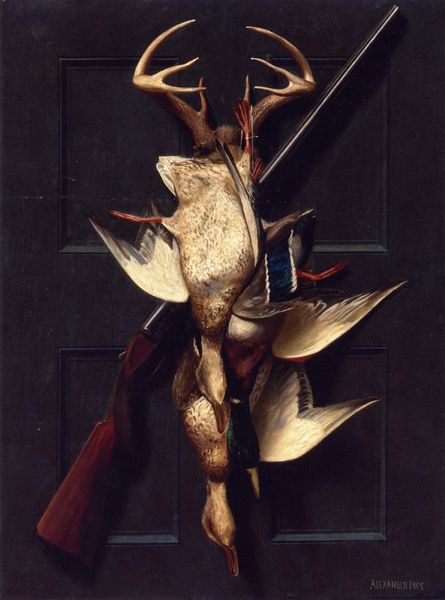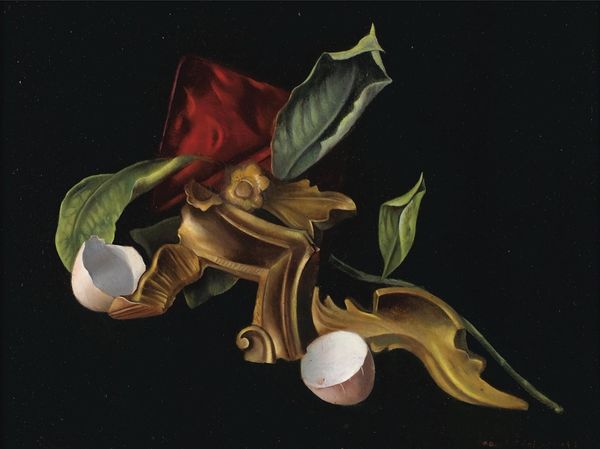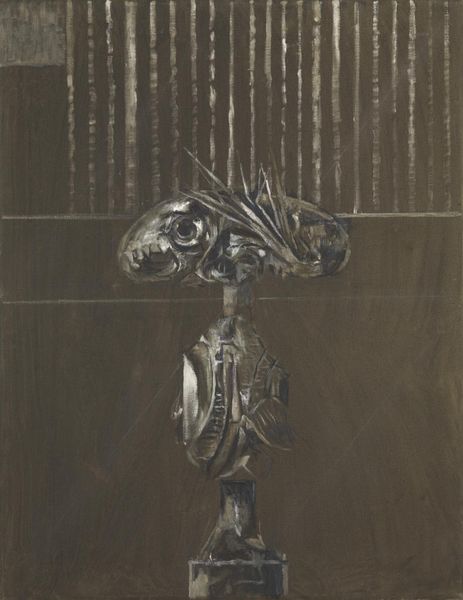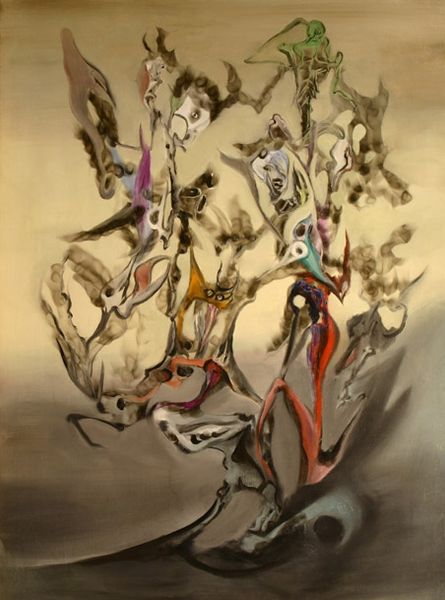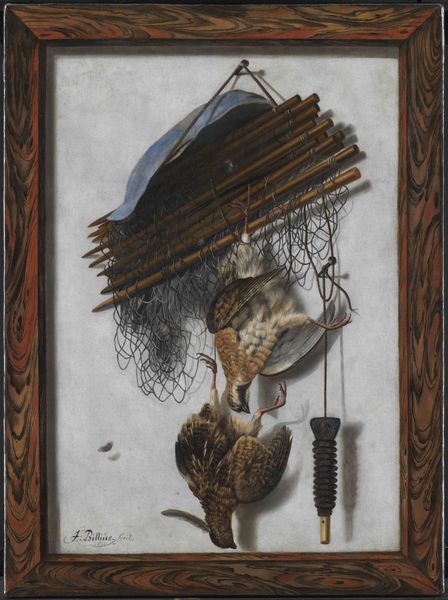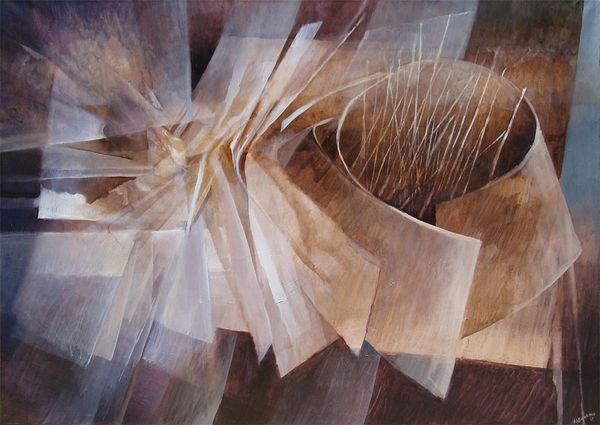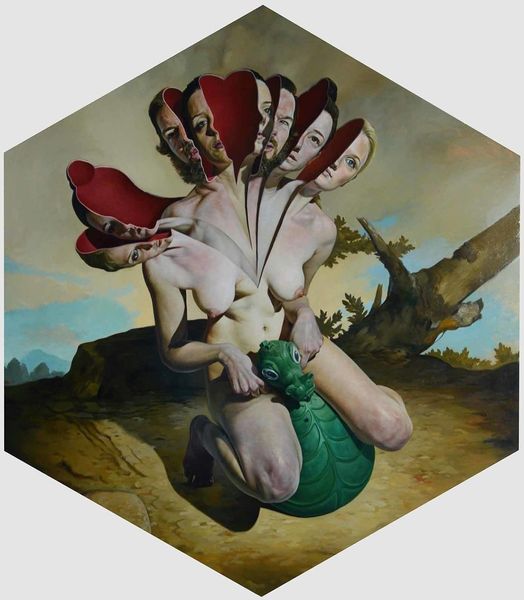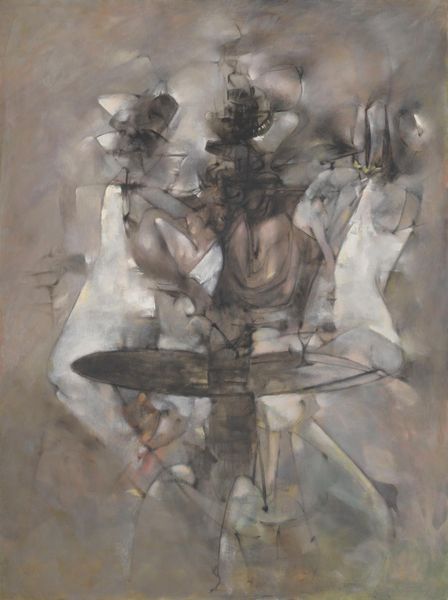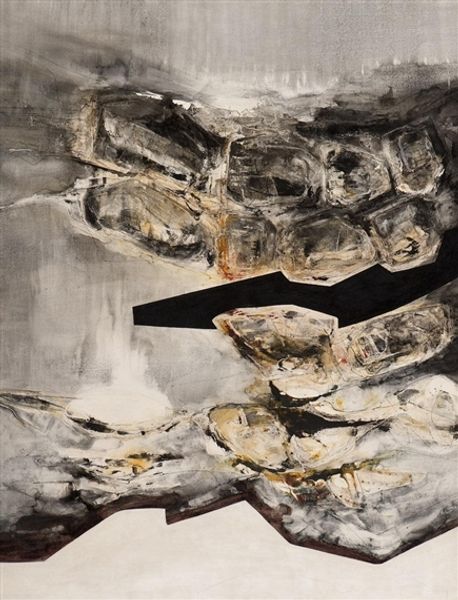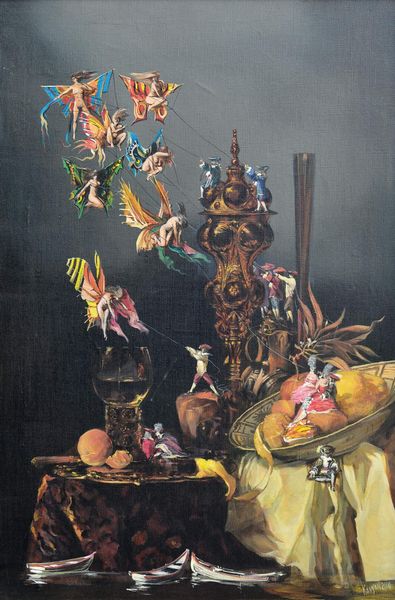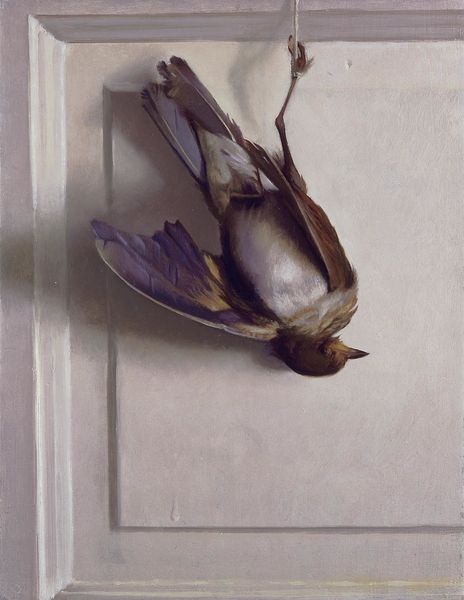
painting, oil-paint, photography
#
still-life
#
painting
#
oil-paint
#
sculpture
#
photography
#
oil painting
#
genre-painting
#
academic-art
#
realism
Copyright: Public domain
Editor: Here we have "Trophies of the Hunt" by Alexander Pope, painted in 1905, using oil paint. It strikes me as a pretty traditional composition, but something about the darkness makes it almost macabre. What do you see in this piece? Curator: What I see immediately is a celebration, and simultaneously a visual record, of power dynamics. The composition utilizes the traditional Vanitas symbolism, reminding us of the transient nature of life, yet it goes further. Notice how the hunting implements are arranged almost as heraldry; what do they evoke for you? Editor: Hmm, I see your point about heraldry, almost like a family crest but made of dead animals and hunting tools. It's a bit unsettling! I guess that's part of what I was finding macabre about it. The darkness highlights the lifelessness, doesn't it? Curator: Exactly. And it’s not simply about death, but dominion. Hunting has long been associated with status. Guns, antlers, dead birds…these become potent symbols, almost ritualistic. This painting is, in a sense, performing cultural memory – evoking historical associations between hunting, power, and masculinity. Does that shift your initial perception? Editor: It does. Thinking about the history makes the painting more than just a still life. It feels more… loaded. I wouldn’t have picked up on those layers without your perspective. Curator: And consider the act of 'trophy' display itself; how cultures mark and remember. Each object possesses layers of historical and psychological meaning that resonate even now. Editor: So, it’s not just a depiction, but almost an artifact of cultural values and their evolution over time? I will keep that in mind. Thanks!
Comments
No comments
Be the first to comment and join the conversation on the ultimate creative platform.
